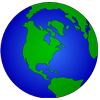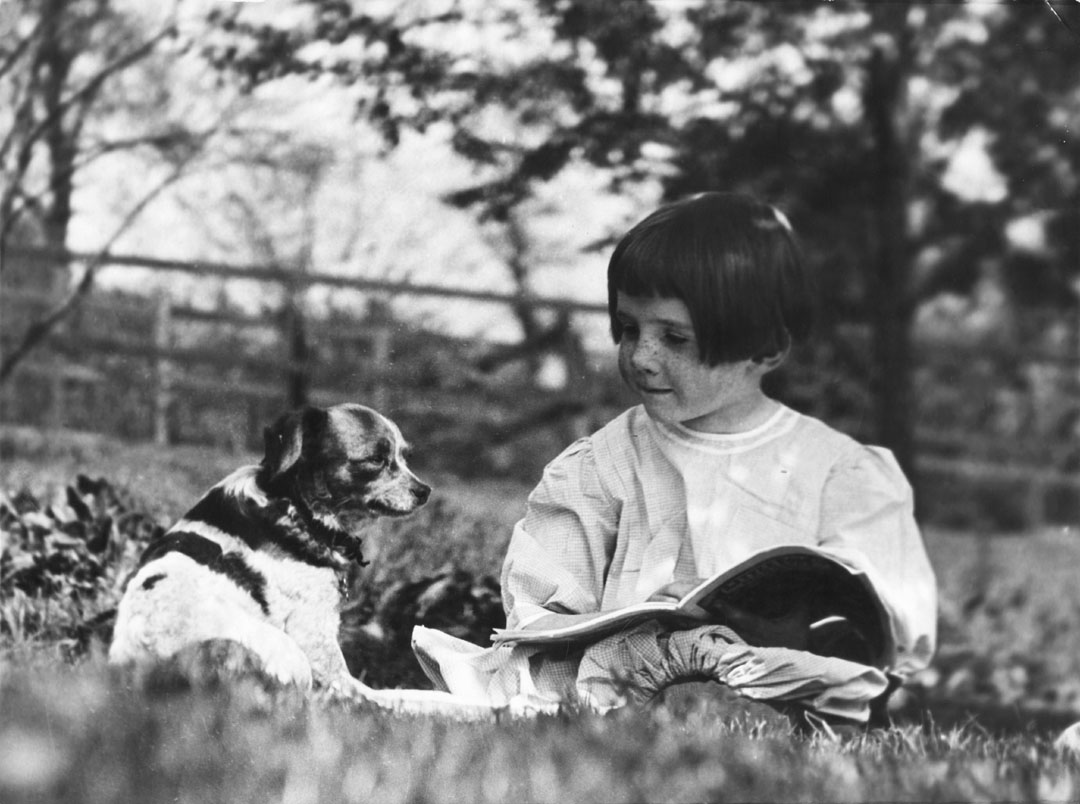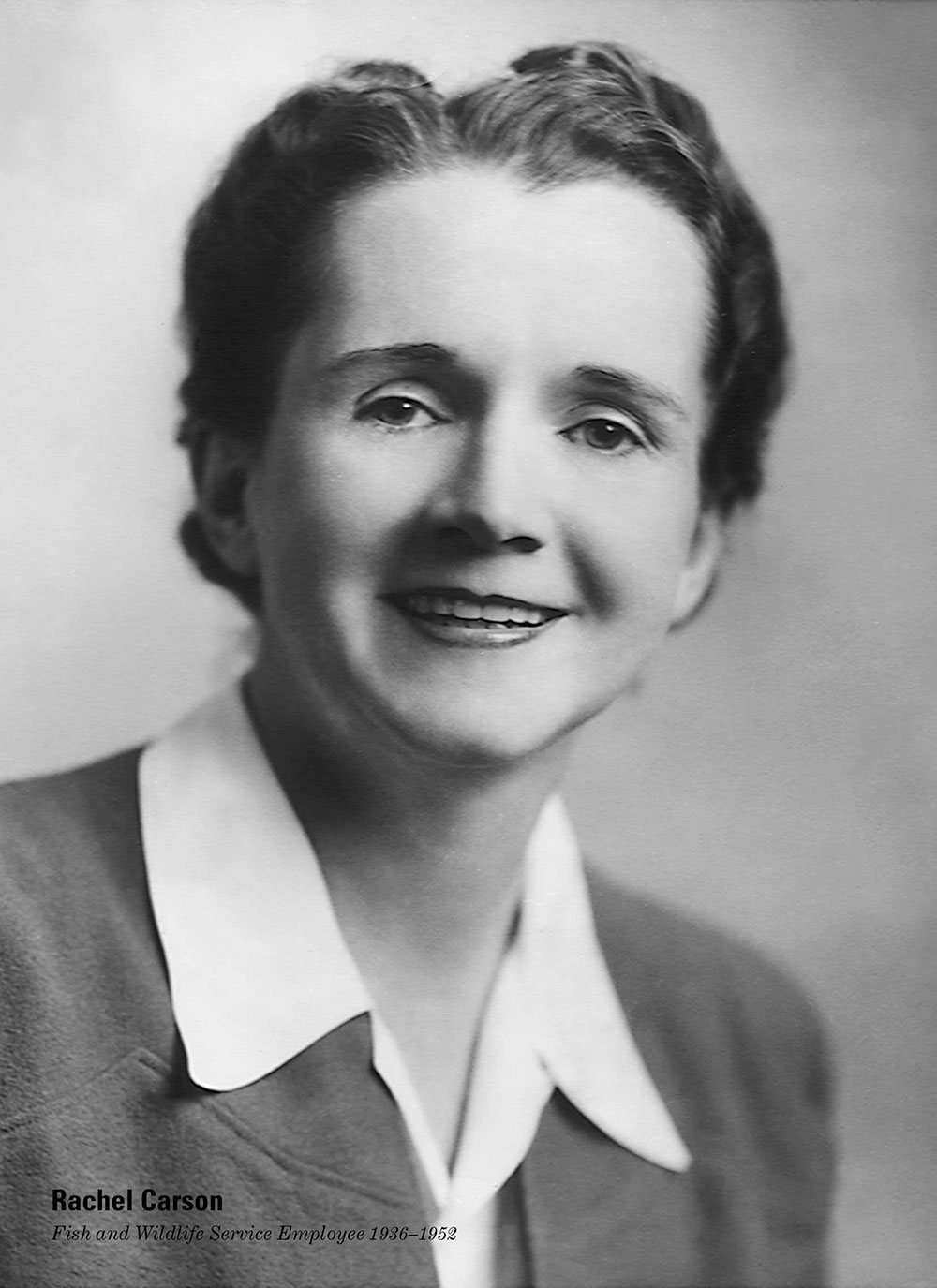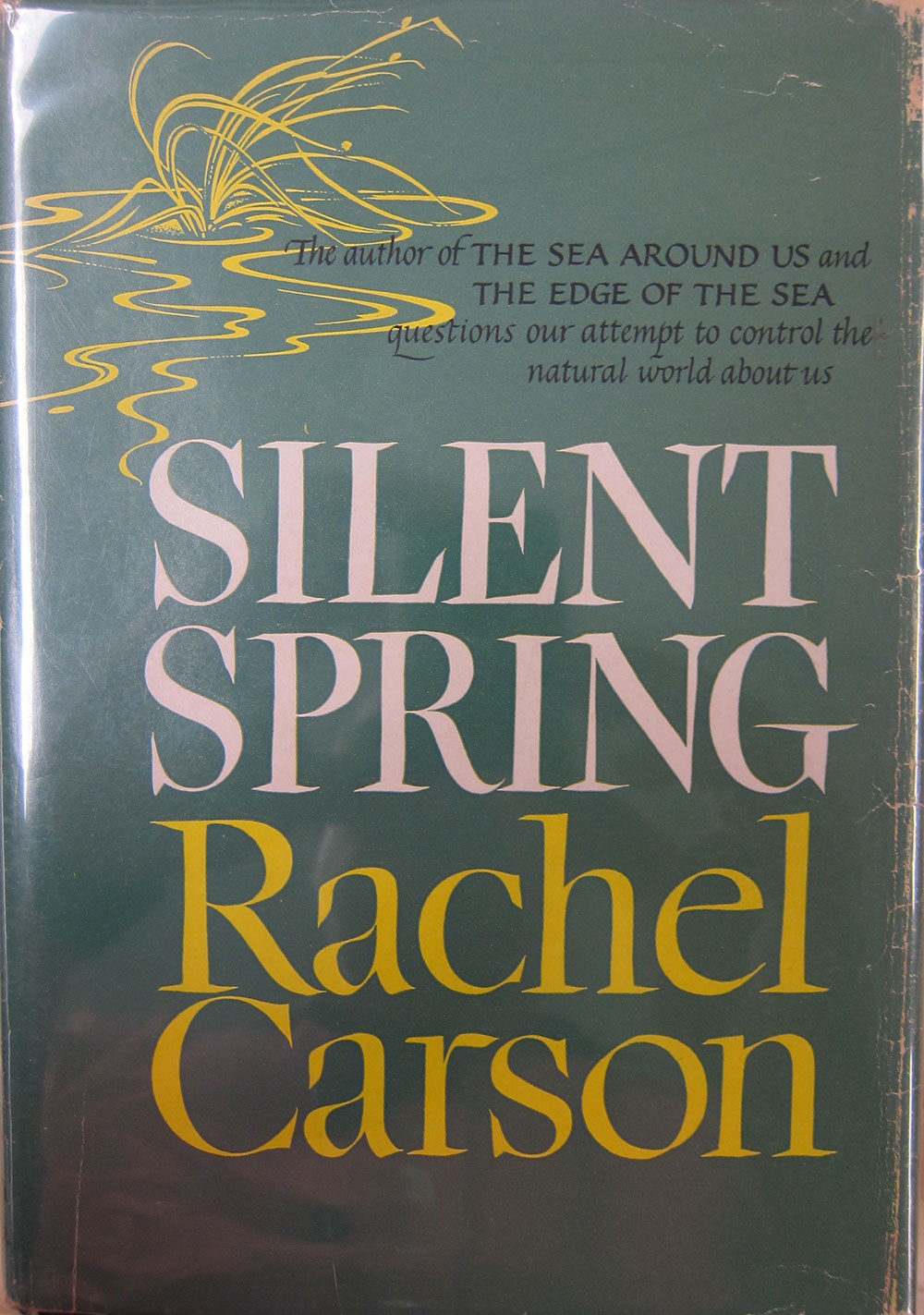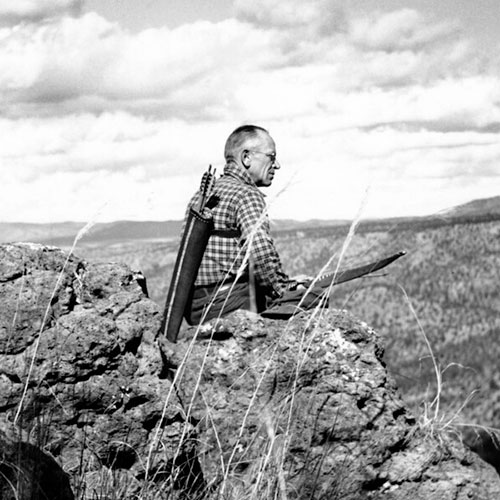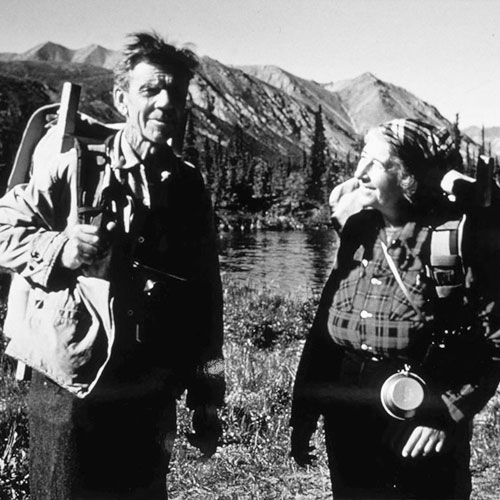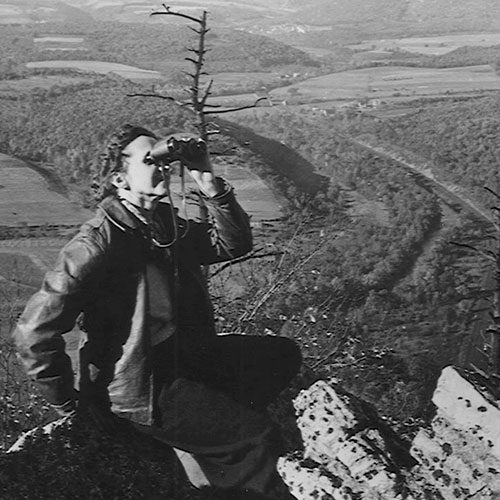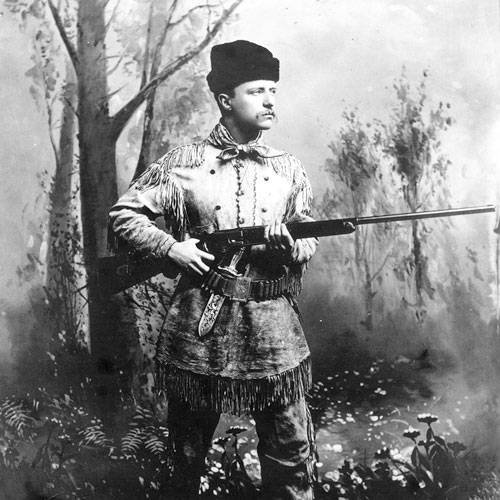Rachel Carson
(1907-1964)
Author of the Modern Environmental Movement
Rachel Carson was born in a small rural community in Pennsylvania near the Allegheny River, where she spent a great deal of time exploring the forests and streams around her family’s 65-acre farm. Carson’s consuming passions as a young child were the nature surrounding her hillside home and her writing. She was first published at the age of ten in St. Nicholas, a magazine dedicated to the work of young writers, which also published the first works by William Faulkner and F. Scott Fitzgerald.
In 1925, Carson entered Pennsylvania College for Women as an English major determined to become a writer. Midway through her studies, however, she switched to biology. Her first experience with the ocean occurred during a summer fellowship at the U.S. Marine Laboratory in Woods Hole, Massachusetts. Upon her graduation in 1929, Carson was awarded a scholarship to complete her graduate work in biology at Johns Hopkins University in Baltimore, an enormous accomplishment for a woman at that time.
Carson’s distinction in both writing and biology earned her a part-time position with the U.S. Bureau of Fisheries in 1935, where she was asked to create a series of short radio programs on marine life called “Romance Under the Waters.” In the meantime, she continued to submit writings on conservation and nature to magazines and newspapers, including The Baltimore Sun, urging the need to regulate the “forces of destruction” and consideration of the welfare of the “fish as well as that of the fisherman.”
In 1936, Carson was appointed a junior aquatic biologist with the Bureau of Fisheries and became one of only two women then employed with the Bureau at a professional level. Her work allowed her frequent visits to the Chesapeake Bay region, where she spoke with watermen and toured commercial plants and conservation facilities in an effort to understand the economics and culture of the area. During World War II, Carson participated in a program to investigate undersea sounds, life, and terrain designed to assist the Navy in developing techniques and equipment for submarine detection.
Carson’s first book, Under the Sea-Wind, published in 1941, highlighted her unique ability to present deeply intricate scientific material in clear poetic language that could captivate her readers and pique their interest in the natural world. In 1943, Carson was promoted to the position of aquatic biologist in the newly created U.S. Fish and Wildlife Service, where she authored many bulletins directed at the American public. One series, known as “Conservation in Action,” was devoted to using laymen’s terms to explore wildlife and ecology on national wildlife refuges. Another series, titled “Food from the Sea,” offered information on proper preparation and advantages of a diet including fish and shellfish to a public unaccustomed to eating freshwater fish.
Carson eventually took the role of assistant editor, then editor-in-chief of all U.S. Fish and Wildlife Service publications, where her work included reviewing manuscripts as well as overseeing the USFWS library and its staff, preparing congressional testimony, writing speeches for USFWS personnel, and creating pamphlet series.
Carson’s second book, The Sea Around Us, was published in 1951. It was eventually translated into 32 languages, and remained on The New York Times‘ best-seller list for 81 weeks. Its success prompted Carson to resign from her position at the Service in 1952, to devote more time to writing. This book, along with The Edge of the Sea, which was published in 1956, offered a new perspective on the term “ecology”—the study of “our living place”—to concerned environmentalists. But it was her final book, Silent Spring, published in 1962, that awakened society to a responsibility to other forms of life. In it, Carson documents in minute biological detail the true menace to the ecosystem caused by harmful pesticides.
Carson had become interested in the danger of pesticides while still associated with the Fish and Wildlife Service; that concern was accelerated with the introduction of DDT in 1945. Although she had left the Service to work on Silent Spring, the studies she conducted while still there provided early documentation on the effects of DDT on marine life. Since abnormalities always show up first in fish and wildlife, biologists were the first to see the effects and the impending danger to the overall environment.
Carson had long been aware of the dangers of chemical pesticides, but she was also aware of the controversy within the agricultural community, which used such pesticides to increase crop production. She had long hoped that someone else would publish an exposé on DDT, but eventually realized that only she had the background as well as the economic freedom to do so. She made the decision to write Silent Spring after conducting years of research across the United States and Europe with the help of Shirley Briggs, a former Fish and Wildlife Service artist who had become editor of an Audubon Naturalist Society magazine called Atlantic Naturalist. Clarence Cottam, another former Fish and Wildlife Service employee, also provided Carson with support and documentation on existing DDT research that was not widely known.
As expected, Carson’s book provoked a firestorm of controversy, as well as personal attacks on her professional integrity. The pesticide industry mounted a massive campaign to discredit her even though she did not urge the complete banning of pesticides, but rather that research be conducted to ensure they were used safely and that alternatives to dangerous chemicals such as DDT would be explored. The federal government, however, ordered a complete review of its pesticide policy and Carson was asked to testify before a Congressional committee along with other witnesses. As a direct result of the study, DDT was banned in the United States. With the publication of Silent Spring, Carson is credited with launching the contemporary environmental movement and awakening concern for the environment.
Carson once stated in a television interview that “man’s endeavors to control nature by his powers to alter and to destroy would inevitably evolve into a war against himself, a war he would lose unless he came to terms with nature.” She died from cancer in 1964, at the age of 57. The Fish and Wildlife Service named one of its refuges near Carson’s summer home on the coast of Maine as the Rachel Carson National Wildlife Refuge in 1969, to honor the memory of this extraordinary woman.
